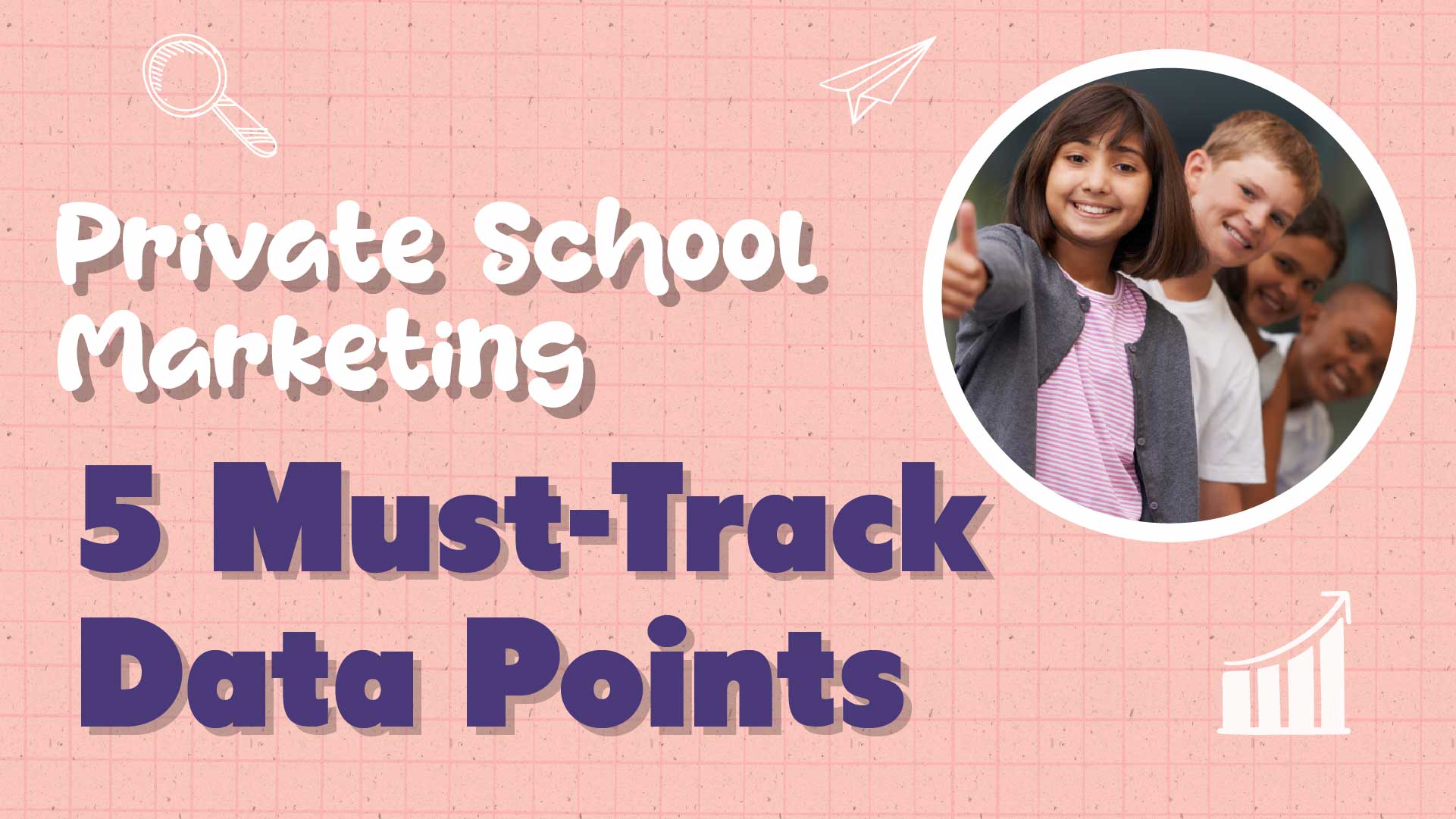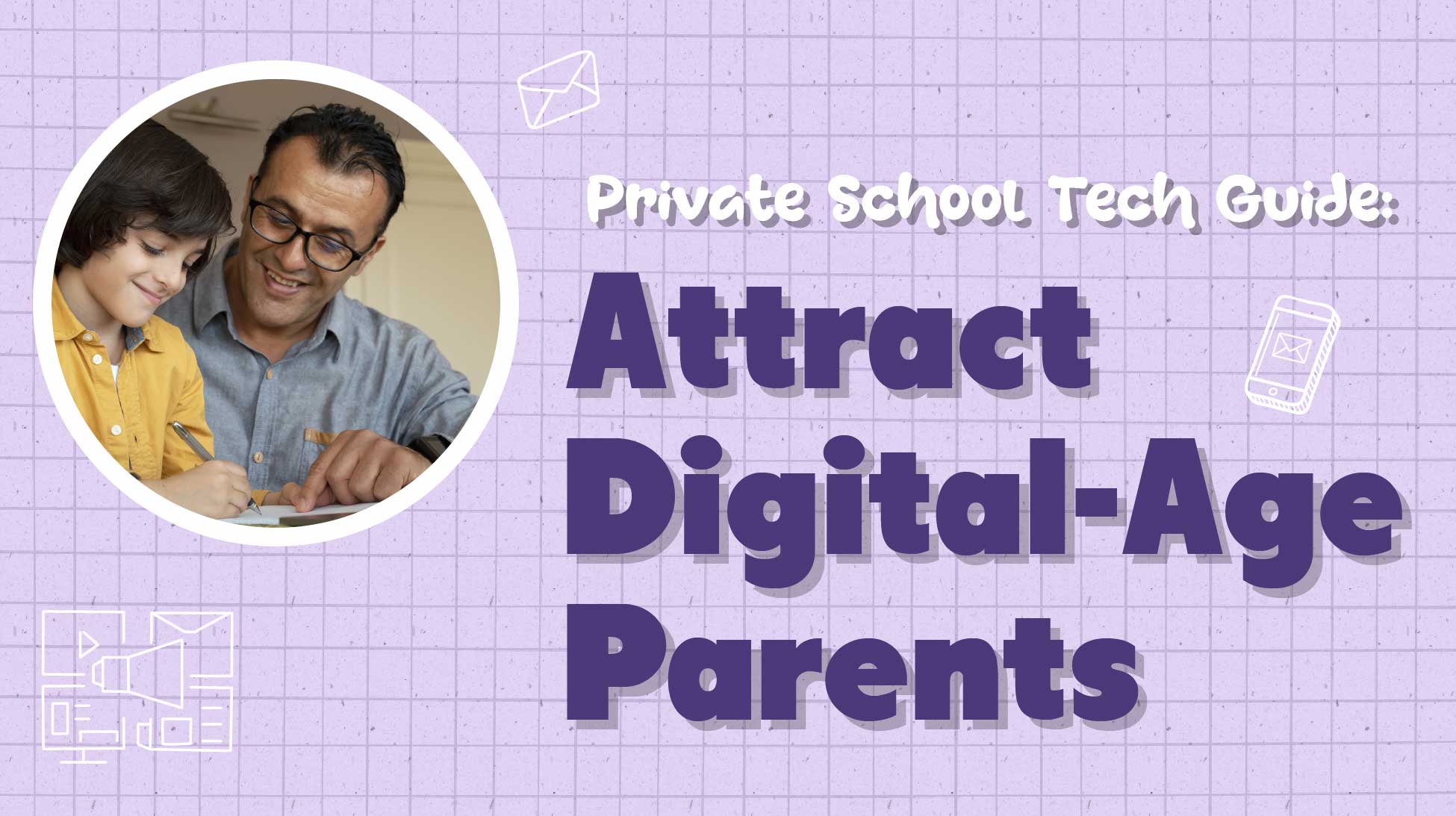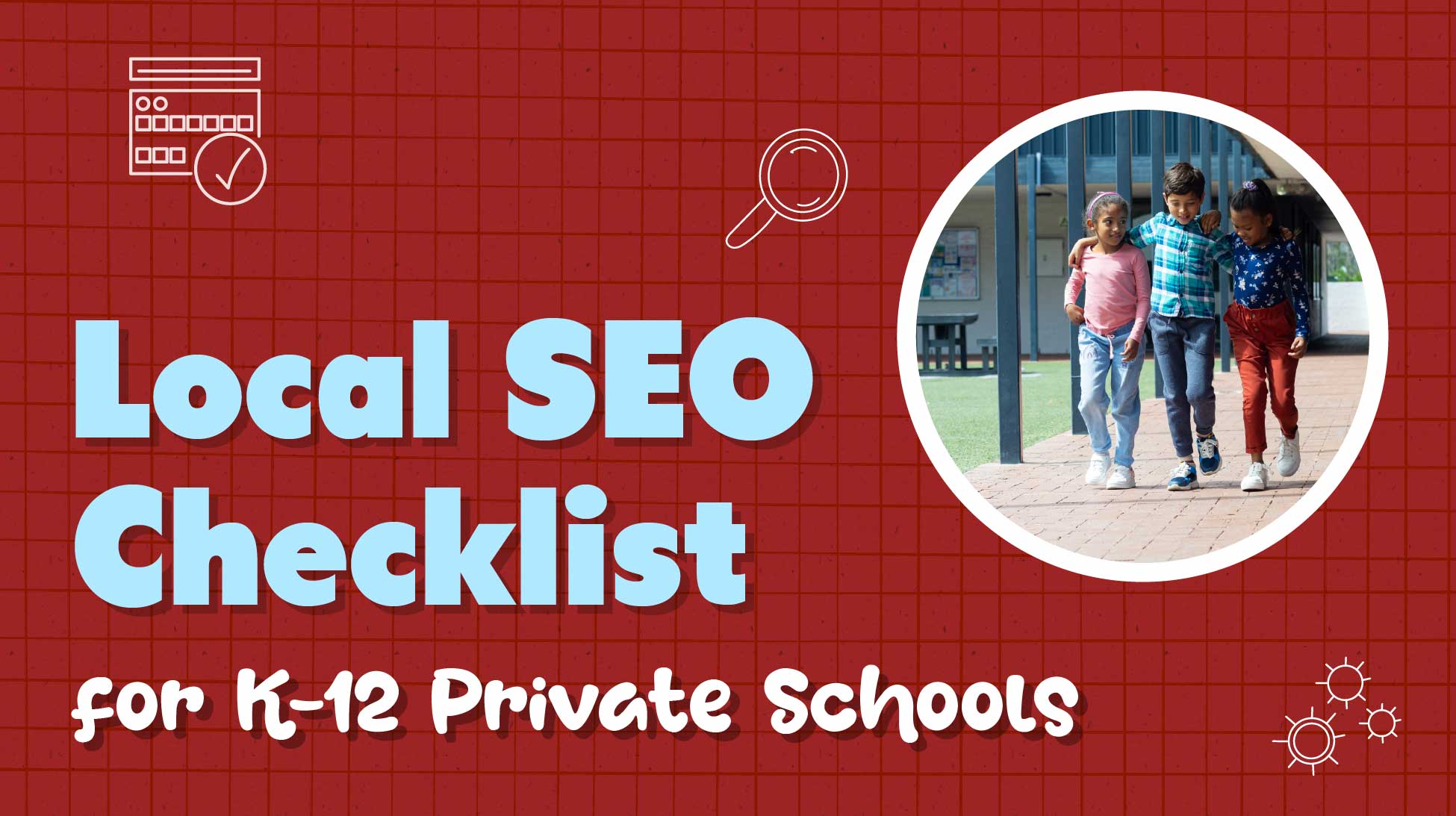Let's face it – today's parents are doing their homework long before they step foot on your campus. According to recent research by International School Parent, 70% of parents say they would use virtual tours to research schools, with 60% considering virtual tours as a viable alternative to in-person visits. More tellingly, schools that implemented professional virtual tours saw a 20% increase in website traffic and a 10% increase in inquiries.
Welcome to the new era of school marketing, where your virtual presence can be just as crucial as your physical campus. Inside Higher Ed reports that individuals who share their contact information while on a virtual tour are twice as likely to apply compared to those who make contact through other channels. Even more impressive, Concept3D's research shows that 66% of virtual tour users return within six months, demonstrating just how valuable this tool can be for nurturing prospective families.
But here's the challenge: creating a virtual tour that truly captures the essence of your school involves more than just stringing together a series of 360-degree photos. It requires strategic planning, technical expertise, and an understanding of what today's tech-savvy parents expect from digital experiences.
In this comprehensive guide, we'll walk through the essential elements that transform a basic virtual tour into an engaging experience that not only showcases your campus but also drives admissions inquiries. Whether you're planning your first virtual tour or looking to upgrade your existing one, these best practices will help you create a digital experience that does justice to your school's unique value proposition.
What Exactly Makes a Modern Virtual Tour?
Remember those clunky virtual tours from the early 2000s that felt more like a PowerPoint presentation gone wrong? Thankfully, we've come a long way. Today's virtual tours are sophisticated digital experiences that can make prospective families feel like they're already part of your school community.
Beyond the Basics: Types of Virtual Tours
Modern educational virtual tours generally fall into three categories:
- 360-Degree Photographic Tours: Think Google Street View, but for your campus. These tours allow viewers to navigate through high-resolution panoramic images of your facilities, with the ability to look around in any direction. Perfect for showing off that newly renovated library or state-of-the-art science lab.
- Video-Based Interactive Tours: These combine professional videography with interactive elements, allowing viewers to choose their path through your campus. Imagine a "choose your own adventure" story, but instead of fighting dragons, parents are discovering what makes your school unique.
- Hybrid Immersive Experiences: The cream of the crop, these tours combine 360-degree imagery, videos, drone footage, and interactive elements. They might include student and faculty interviews, classroom snippets, or even live-streamed events integration.
Why Virtual Tours Matter More Than Ever in Education
Let's look at some compelling reasons why virtual tours have become indispensable for private schools:
- Proven Impact on Engagement: Schools that implemented virtual tours experienced a 20% increase in website traffic and a 10% increase in inquiries. Even more impressive, individuals who share their contact information during a virtual tour are twice as likely to apply compared to those who make contact through other channels. (Source: Inside Higher Ed)
- Time Efficiency: While nothing replaces an in-person visit, virtual tours allow families to pre-screen schools efficiently. This means when they do visit in person, they're already warm leads.
- Geographic Reach: In an era where families might be relocating from across the globe, virtual tours break down geographical barriers. Your next star student might be viewing your campus from Shanghai or San Francisco.
- Competitive Advantage: With most private schools now offering some form of virtual tour, not having one might put you at a disadvantage. However, having an exceptional one can set you apart.
- Enhanced Information Access: Virtual tours provide detailed visuals and descriptions of campus facilities, allowing prospective families to explore different areas of your campus in ways that traditional marketing methods can't match. The data shows that 66% of virtual tour users return within six months, demonstrating their value in the decision-making process.
- Resource Optimization: Virtual tours reduce the time admissions staff spend giving preliminary tours to families who might not be the right fit, allowing them to focus on more qualified prospects.
Current Market Trends
The virtual tour landscape is evolving rapidly, particularly in the education sector. Recent trends include:
- Integration with admissions management systems
- Real-time scheduling capabilities for live virtual tours
- Multilingual support for international families
- Virtual reality (VR) compatibility for immersive experiences
- Analytics integration for tracking engagement
Think of your virtual tour as your digital admissions counselor – working 24/7, never taking a vacation, and always putting your school's best foot forward. But like any good admissions counselor, it needs the right tools and training to succeed.
Essential Components That Make Virtual Tours Shine
If a virtual tour is your digital admissions counselor, think of these components as its essential skill set. Just as you wouldn't send an unprepared counselor to meet with prospective families, you shouldn't launch a virtual tour without these critical elements.
High-Impact Visual Elements
Professional Photography Requirements
- 360-degree Coverage: Every shot should tell a story. That means capturing not just empty hallways but spaces that showcase your school's energy and culture.
- Resolution Standards: Aim for a minimum of 4K resolution. Remember, parents might be viewing your tour on everything from smartphones to 4K monitors.
- Seasonal Variety: If possible, capture your campus during different seasons. That beautiful quad looks different (but equally impressive) in fall colors and spring blooms.
- Action Shots: Include both empty spaces and "life in action" shots. Parents want to see both the facilities and how they're used.
Lighting Considerations
Here's where many school virtual tours stumble. Poor lighting can make your state-of-the-art facilities look like something from a different decade (and not in a charming, ivy-league way).
- Natural light optimization
- Consistent indoor lighting
- Proper exposure balance
- Time-of-day considerations for exterior shots
Interactive Features That Engage
Think of these as the conversation starters your virtual tour can use to keep prospective families engaged:
Essential Interactive Elements
- Information Hotspots
- Quick facts about facilities
- Program highlights
- Student achievement statistics
- Faculty spotlights
- Clickable Navigation
- Intuitive path-finding
- Multiple tour routes based on interest (academics, arts, athletics)
- Skip-to-section capabilities
- Interactive campus map
- Multimedia Integration
- Student testimonials
- Class snippets
- Performance highlights
- Sports events
Engagement Features
- Virtual Tour Guides: Consider adding narration from current students or faculty
- Question Markers: Points where viewers can click to get answers to common questions
- Decision Points: Allow viewers to choose their path based on their interests
- Call-to-Action Integration: Strategic placement of admissions inquiry forms
Content Overlay Strategy
Your virtual tour should be more than just pretty pictures – it needs to tell your school's story:
Academic Focus
- Highlight classroom technology
- Showcase teaching methodologies
- Display student work
- Feature special programs
Community Spirit
- Cultural events
- Student Activities
- Parent involvement
- Service projects
Distinctive Features
- Unique facilities
- Special programs
- Teaching philosophy in action
- Community partnerships
The "Secret Sauce": Emotional Connection
Here's what separates good virtual tours from great ones – the ability to create an emotional connection. Consider incorporating:
- Student journey stories
- Day-in-the-life sequences
- Community tradition highlights
- Parent testimonials
- Alumni success stories
Remember, while the technical components are crucial, the human elements often seal the deal. Parents might be impressed by your new science lab, but they'll be moved by seeing students enthusiastically engaged in a hands-on experiment.
Technical Requirements: Making Your Virtual Tour Work as Hard as Your Admissions Team
Let's be honest – even the most beautifully shot virtual tour won't impress anyone if it takes longer to load than a student council meeting. Here's how to ensure your tour performs flawlessly across all devices.
Platform Selection: Choosing Your Digital Foundation
Think of your virtual tour platform as your digital campus – you need one that's both impressive and functional. Here's what to consider:
Essential Platform Features
- Hosting Capabilities
- Cloud-based infrastructure
- Content delivery network (CDN) support
- Bandwidth optimization
- Scalable storage solutions
- Integration Requirements
- CMS compatibility (especially with your school's website)
- Admissions system integration
- Calendar/scheduling tool compatibility
- Social media sharing capabilities
- Security Features
- Data encryption
- Access controls
- COPPA compliance
- Privacy protection measures
- Analytics Integration
- User behavior tracking
- Heat mapping
- Conversion monitoring
- Engagement metrics
Technical Specifications That Matter
Resolution and Quality Standards
- Minimum resolution: 4K (3840 x 2160 pixels)
- Image format: JPEG/PNG for stills, H.264/HEVC for video
- Frame rate: 30fps minimum for video elements
- Compression: Optimal balance between quality and load time
Mobile Optimization Requirements
Because let's face it – most parents are probably touring your virtual campus while waiting in the carpool line at their child's current school.
- Responsive design implementation
- Touch-friendly navigation
- Automatic quality adjustment
- Portrait/landscape optimization
Loading Speed Optimization
Your virtual tour should load faster than a student rushing to the cafeteria on pizza day:
- Initial load time: Under 3 seconds
- Image progressive loading
- Smart preloading of adjacent scenes
- Bandwidth-adaptive streaming
Implementation Considerations
Technical Setup Requirements
- Dedicated virtual tour subdomain
- SSL certificate implementation
- CDN configuration
- Backup systems
Browser Compatibility
- Chrome/Firefox/Safari/Edge support
- Legacy browser fallback options
- Mobile browser optimization
- WebVR compatibility
Performance Monitoring
- Real-time availability tracking
- Load time monitoring
- Error logging
- User experience metrics
Think of these technical requirements as the behind-the-scenes staff that keeps your school running smoothly – essential but often unnoticed until something goes wrong.
Production and Implementation: Your Virtual Tour Game Plan
Just like planning your annual open house, creating a virtual tour requires careful orchestration. Let's break down the process into manageable steps that will ensure your virtual tour represents your school at its best.
Pre-Production Planning: Setting the Stage
Timeline Development
Think of this as your academic calendar – every milestone needs careful planning:
- Discovery Phase (2-3 weeks)
- Stakeholder interviews
- Campus location scouting
- Content strategy development
- Key messaging identification
- Planning Phase (2-4 weeks)
- Shot list creation
- Script development
- Scheduling coordination
- Resource allocation
- Production Phase (1-2 weeks)
- Photography/Videography
- Audio recording
- B-roll capture
- Interactive element creation
- Post-Production Phase (3-4 weeks)
- Content editing
- Interactive element integration
- Platform implementation
- Testing and refinement
Essential Equipment Checklist
Just as your science lab needs the right equipment, your virtual tour production requires specific tools:
Photography/Videography Gear
- 360° camera (minimum 8K resolution)
- Professional DSLR camera
- Drone (for aerial shots)
- Stabilization equipment
- Professional lighting kit
- High-quality microphones
Supporting Equipment
- Laser measuring tools
- Color calibration tools
- Backup batteries
- Mobile workstation
- Portable hard drives
Location Strategy: Showcasing Your Campus
Priority Areas
- Main entrance and welcome areas
- Signature learning spaces
- Athletic facilities
- Arts venues
- Community gathering spaces
- Unique campus features
Timing Considerations
- Optimal natural lighting periods
- Student activity schedules
- Seasonal considerations
- Campus event calendar
Quality Control Process: Getting It Right
Testing Protocols
Think of this as your academic standards for digital excellence:
- Technical Testing
- Load time verification
- Cross-device compatibility
- Navigation functionality
- Interactive feature testing
- Content Review
- Accuracy of information
- Brand consistency
- Message alignment
- Educational Value
- User Experience Testing
- Navigation intuition
- Information Accessibility
- Engagement factors
- Call-to-action effectiveness
Feedback Integration Process
- Beta testing with select families
- Faculty and staff review
- Student feedback sessions
- Administrative approval
Implementation Best Practices
Soft Launch Strategy
- Internal rollout to staff
- Limited external testing
- Feedback collection
- Refinement period
Full Launch Preparation
- Staff training
- Marketing Coordination
- Technical support readiness
- Analytics setup
Maintenance Schedule
Just like your campus needs regular maintenance, your virtual tour requires ongoing attention:
- Monthly content reviews
- Quarterly updates
- Annual comprehensive refresh
- Regular technical checks
Common Production Pitfalls to Avoid
- Poor Planning
- Rushing the timeline
- Inadequate location preparation
- Insufficient stakeholder input
- Limited testing time
- Technical Oversights
- Inadequate backup systems
- Poor mobile optimization
- Insufficient bandwidth testing
- Incomplete browser testing
- Content Missteps
- Outdated information
- Inconsistent branding
- Missing call-to-actions
- Weak storytelling elements
Remember, your virtual tour is often a family's first impression of your school. Like a well-orchestrated open house, it needs to run smoothly while showcasing your institution's unique value proposition.
Distribution and Marketing: Getting Your Virtual Tour in Front of the Right Eyes
You wouldn't build a state-of-the-art performing arts center and forget to tell anyone about it, would you? The same principle applies to your virtual tour. Let's explore how to ensure it becomes a cornerstone of your school's digital presence.
Website Integration: Your Digital Front Door
Strategic Placement
- Homepage hero section placement
- Admissions page integration
- Interactive campus map embedding
- Mobile navigation optimization
Think of your virtual tour as your digital open house – it should be as easy to find as your physical front gate.
Integration Best Practices
- Clear call-to-action buttons
- Multiple entry points throughout the website
- Contextual placement in relevant sections
- Quick-load preview options
Social Media Strategy: Spreading the Word
Platform-Specific Approaches
- Parent group engagement
- Community Outreach
- Event integration
- Paid advertising campaigns
- Behind-the-scenes tour content
- Student takeover features
- Virtual tour highlights
- Instagram Stories for quick previews
YouTube
- Tour preview videos
- Student testimonial integration
- Feature highlight clips
- Virtual open house recordings
SEO Optimization Techniques
Virtual Tour Landing Page Optimization
- Long-tail keyword integration
- Location-based SEO
- Educational search term optimization
- Mobile-first indexing preparation
Content Strategy
- Regular tour updates
- Fresh content integration
- User-generated content
- Seasonal highlights
Leveraging Educational Networks
Partnership Opportunities
- Educational consultants
- Relocation specialists
- International student agencies
- Local real estate agents
Professional Network Integration
- Independent School Associations
- Educational Technology Forums
- Parent Network Groups
- Alumni Associations
Measuring Distribution Success
Key Metrics to Track
- Tour completion rates
- Drop-off points
- Device type usage
- Geographic data
- Conversion paths
Remember, your virtual tour is more than just a marketing tool – it's an extension of your school's commitment to excellence and innovation. The way you distribute and promote it should reflect that same level of commitment.
Measuring Success: Beyond Just View Counts
Just as you wouldn't judge a student's performance on a single test score, your virtual tour's success shouldn't be measured by views alone. Let's dive into the metrics that really matter for educational institutions.
Key Performance Indicators (KPIs)
Engagement Metrics
- Average Tour Duration
- Benchmark: 4-6 minutes
- Indicates content quality and user interest
- Helps identify the most engaging sections
- Interaction Rate
- Hotspot clicks
- Information panel opens
- Navigation pattern analysis
- Feature utilization rates
- Completion Rates
- Full tour completion
- Partial tour patterns
- Drop-off points
- Return visitor behavior
Conversion Metrics
Think of these as your virtual tour's "grade point average":
- Primary Conversion Actions
- Inquiry form submissions
- Open house registrations
- Campus visit scheduling
- Application initiations
- Secondary Conversion Actions
- Brochure downloads
- Newsletter signups
- Social media follows
- Contact information submissions
Remember, your virtual tour is an investment in your school's digital future. Like any good investment, it requires regular monitoring and optimization to ensure maximum returns.
Conclusion: Your Virtual Future Starts Now
In today's digital-first world, a virtual tour isn't just a nice-to-have feature – it's an essential tool in your school's marketing and admissions arsenal. When done right, it serves as your 24/7 open house, reaching prospective families across time zones and geographical boundaries.
Remember these key takeaways:
- Quality matters more than quantity
- User experience drives engagement
- Regular updates keep content fresh
- Analytics inform optimization
- Integration with your overall digital strategy is crucial
Ready to Transform Your School's Digital Presence?
The journey to creating an exceptional virtual tour starts with a single step. Whether you're looking to create your first tour or upgrade an existing one, the time to act is now.
Contact me to discuss how we can help bring your campus to life in the digital space. Our team of education marketing specialists understands what makes schools unique and knows how to showcase that special something that makes yours stand out.
Don't let your digital presence fall behind while other schools innovate. Let's create a virtual tour that not only showcases your campus but also drives admissions and strengthens your school's brand.





